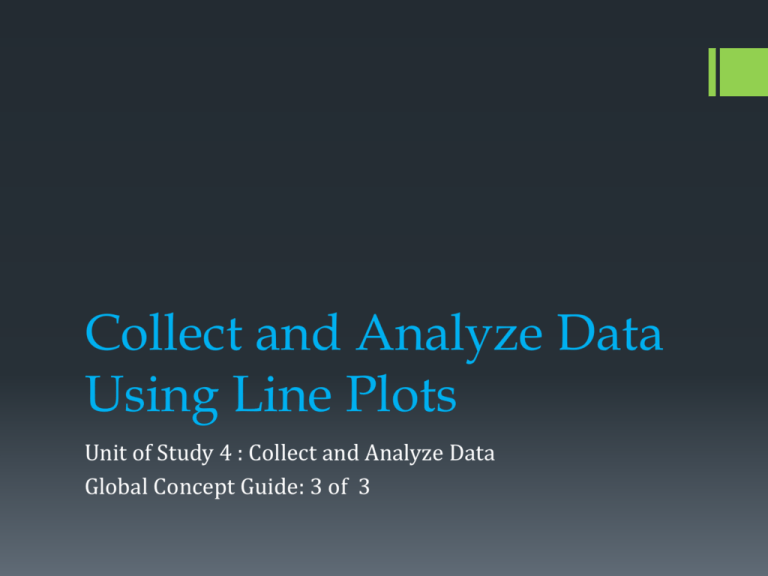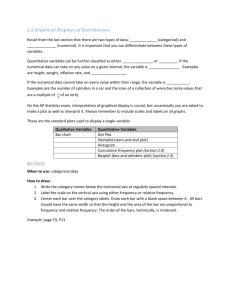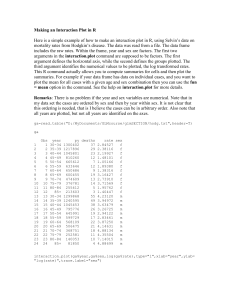Odd and Even Numbers
advertisement

Collect and Analyze Data Using Line Plots Unit of Study 4 : Collect and Analyze Data Global Concept Guide: 3 of 3 Content Development A line plot shows data on a number line. Students need to know that the numbers below the number line are like the categories in a pictograph or bar graph. However, in a line plot these categories are numerical. The number of Xs above each number on the number line tells how many times this number or category occurs. Line plots may be confusing to some students. It is easy to mix up the numbers below the number line and the number of Xs above it. Content Development Example In this line plot the numbers on the number line represent the number of letters in a name (numerical category). Each X stands for one student (or one time each numerical category occurred). Day 1 The focus of day 1 is relating a line plot to the number line. Students should begin their work with line plots using a blank number line. As a class you can conduct a survey and display its results on this number line. Sample Survey Question: How many brothers and sisters do you have? Each student could be given a post-it note with an x on it and then walk up to the board and place their x above the number of siblings they have. Discussion should revolve around the parts of a line plot and their purposes (numerical categories, occurrences or Xs, scale, and title.) Survey Question Non Example: Chose your favorite animal: dog, cat, hamster, rabbit. The survey results from this question SHOULD NOT be displayed on a line plot because the categories (dog, cat, hamster, rabbit) are not numerical. Day 2 The focus of day 2 is analyzing data in various line plots. Students should be exposed to many different line plots and questions. Pay particular attention to the question being asked. Are you asked about the numerical categories or the number of occurrences? Day 2 Sample Question: What is the difference between the greatest number of letters in a name and the least number of letters in a name? In this question you are being asked about the range of the numerical categories (numbers at the bottom of a number line). The greatest number of letters in a name is 8 and the least 3. The difference between these categories is 5. (If you start @ 8 and jump back to 3, you will have jumped back 5 times.) Possible Misconception: Students may misinterpret this question and look for the categories with the most and least amounts of occurrences and find the difference between the occurrences. Day 2 Another Sample Question : How many students have 5 or more letters in their name? In this question you are being asked about the students, or the number of occurrences, which are represented by the Xs. Since 5 or more includes numerical categories 5-8, you would have to count all the Xs in each of those numerical categories which would yield an answer of 8 (5 + 1 + 2). Possible Misconception: Students may answer 5 if they misinterpret the meaning of “5 or more.” Day 3 The focus of day 3 is displaying data in a line plot. Students should be given opportunities to represent data from frequency tables and tally tables in line plots and compare results. By the end of Day 3 students should be able to: Relate line plots to the number line. Answer questions based on numerical categories or occurrences within a line plot. Identify the same set of data within multiple representations (tables, chart, and graphs). Display survey results within a line plot. Enrich/Reteach/Intervention Reteach- Have students draw a number line numbered 1 to 6 on a sheet of paper or white board. Have them roll a number cube 5 times, placing a counter above a number each time it is rolled. (Materials: counters, number cubes, paper or white board) Example: Ask questions based on results shown in the line plot. Enrich- Give students a completed line plot and have them create questions for the data displayed. A second option is giving students clues to create a line plot. (Enrich Activity, Ch. 2 TE p. 99B)


